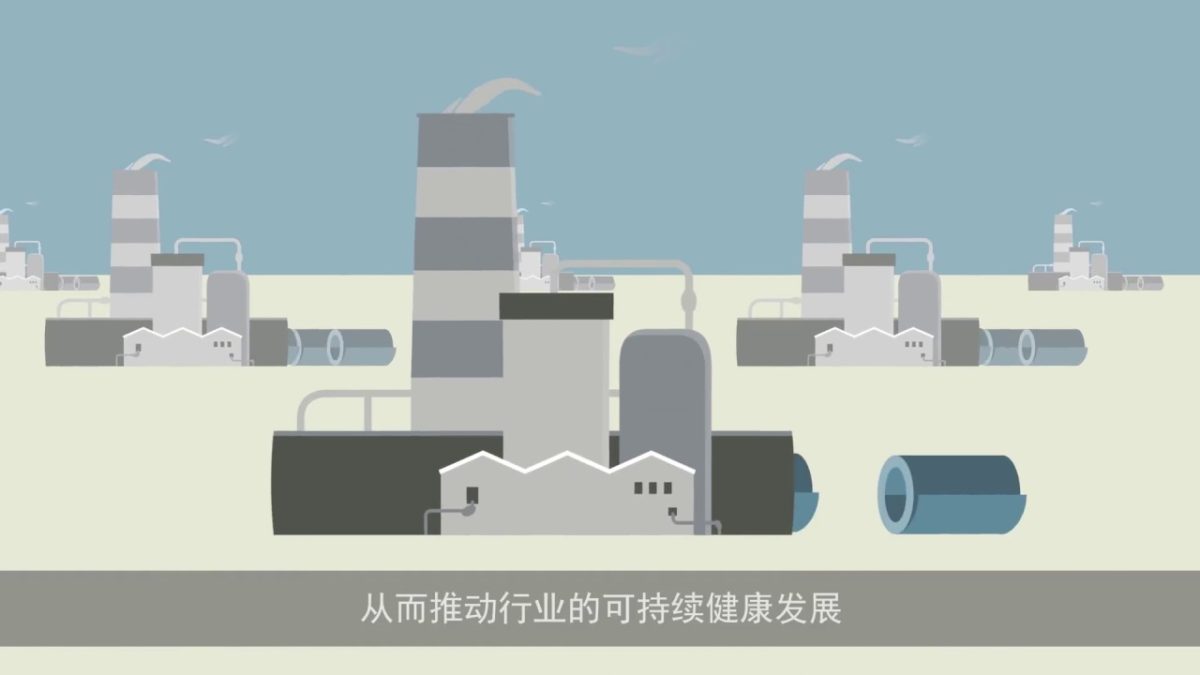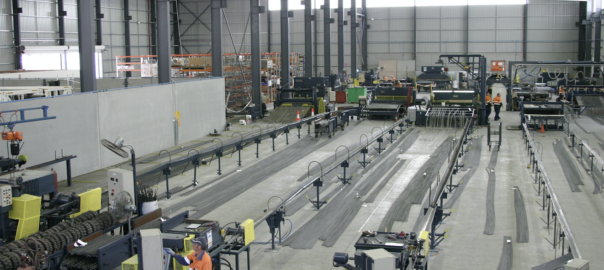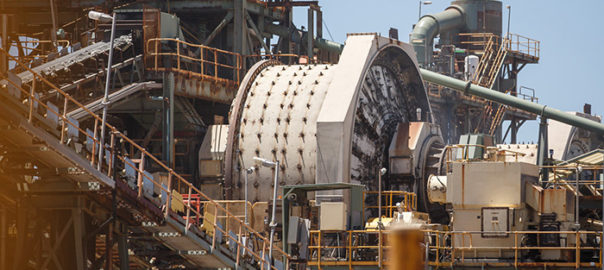A REINVENTION OF SALES, PRODUCTION, INVENTORY FORECASTS
Posted May 11, 2018 |
Quarry operations are moving away from messy spreadsheets and rethinking communication, production planning and sales forecasting to save time and improve productivity. One such medium that quarries worldwide are utilising is PlantDemand, a business intelligence tool.
The importance of collaboration and real time information sharing in today’s business climate cannot be overstated. It is even more important for quarry operations that are constantly trying to plan and match production levels to sales volumes.
Plant managers are challenged to maintain optimal quarry cash flow and inventory while preventing plant overbooking and co-ordinating with multiple suppliers for raw materials − all to schedule on-time deliveries that meet customers’ changing orders.
This is especially difficult because sales teams don’t often have insight into what materials are available to be produced and sold, and how a new order will affect production. It’s also challenging managers to produce accurate forecasts and get up-to-date information about the plant capacity and actual sales versus forecast sales.
Modern business intelligence
The latest report by US Market research company Forrester Research predicts that 2018 will see enterprises refocus on leveraging advanced collaboration and communication tools across the enterprise.
It also predicts that in the coming years everyone within an organisation will become a data analyst, with the ability to leverage modern business intelligence (BI) tools to quickly sort, prioritise and visualise targeted information that is directly relevant to that individual’s line of responsibility. The hope is that better visual interfaces and real time reporting will actively support collaboration across operational teams and drive better decision-making at every level inside an organisation.
Not only that, the Millennial generation is expected to represent 50 per cent or more of the overall workforce by the year 2020.2 And collectively, not only are younger generations “digital natives”, meaning they grew up with technology, but they also value it greatly and see it as a differentiator and a “must have” for employers.
If companies want to hire and retain top talent, they will need to continue to shift towards easy to use cloud-based tools and applications that support productivity and a collaborative environment.
It is out of this BI-focused landscape that Daniel Mekis began to unravel the communication, production and scheduling problems facing many quarries today. As an assistant plant manager in California, he struggled first hand with planning and scheduling of materials at various quarries, and he felt a lack of collaboration was a major part of the problem.
His team tried Outlook, Excel and even Microsoft Access and SharePoint solutions to compile sales information and plan and co-ordinate production.
“Back when I worked as a plant engineer, it was our job to know if we were going to make enough material to meet the demands of our customers,” Mekis said. “Even if you know you’re producing 250,000 tonnes of material throughout the year, the sales quantities change daily, with many orders changing multiple times before they actually ship.
“Other problems we ran into were plant overbooking, the quarry running out of materials, sourcing materials from multiple suppliers, or using incorrect materials. I used to spend at least three hours for each plant per week compiling sales information to build a forecast report – which would show materials demand in different time intervals.”
Real time planning
Quarries are beginning to take advantage of new collaborative tools that enable teams to move away from solving a problem on an individual island and move towards initiating well informed discussions between the various branches of an operational team.
One new approach that stands out is PlantDemand, an online quarry scheduling tool3, not just for planning and forecasting orders and production, but also for identifying issues and solving them before they come up.
“PlantDemand is a new concept for aggregate operations because it uses collaboration and real time information sharing,” Dennis Schaaf, the director of PlantDemand, said. “It provides a single source of truth to plan sales, production, material needs and inventory forecasts.
PlantDemand’s online calendar is described as:
- A scheduler that lets plant managers drill down into scheduling plans.
- A “single source of truth” that provides plant foremen, superintendents, engineers, sales and the back office with data on aggregate production, inventory planning and forecasting.
- A “live sales calendar” that allows teams to adjust the plant, hours, modes and sales. As changes are reflected immediately, users can see how current production and future orders will be affected and how plant operations teams can solve inventory issues before they occur.
PlantDemand allows plant managers to create summaries and quickly run default and custom pivot-style reports against actual sales or forecasts. Automatic reporting features make it easy for the sales team to quickly enter orders and see exactly how much can be sold on any given day. Plant operators receive reports from inside sales or generate their own reports to see exactly what they need to produce, and how much raw material they need to order from suppliers.
“Most importantly for quarries, they can now forecast exactly what their customers want today and down the line, and they now have a big picture view to help them balance production, inventory and cash flow,” Mekis said. “That just wasn’t possible before because everyone was bogged down with getting the day’s orders out the door and keeping up with changes.”
Smarter scheduling
Ashlee Avila, the inside material sales representative for US aggregate company Granite Construction, was one of the first PlantDemand subscribers. Her department introduced strategic material purchasing by using the app to track how oil is billed for each product, allowing it to save time and vast amounts of money.
When out in the field or talking with customers, she can quickly log into PlantDemand and add notes to each order. This leaves a historical record of changes made, which might include noting last minute cancellations, indicating customers who left mix, changed the ordered tonnage or other variables. She also likes that she can see the sales calendar for the whole month in PlantDemand every morning, and it’s all colour-coded by material for better organisation and simplified viewing.
“Before PlantDemand we used spreadsheets, but they didn’t scale to the level we needed,” Avila said. “We didn’t have a good way to forecast for the month or week and tell our guys what orders were coming.
“Now, I can log in and within a few clicks I can see our sales calendar for the whole month, week or day. I also create a daily dispatch report every afternoon for our plant foreman, as well as a quality control report that tallies all our orders for the next day.
“We save it as a PDF and it’s in a very easy to use format, so we’re all working from the same schedule.”
Avila said PlantDemand’s mobile app is also extremely useful and she likes that she, the sales team and the plant manager can access it anywhere and at any time, with no software or hardware to install.
In fact, she can use her iPhone to make changes to order dates or tonnage needed while she’s in the field talking with customers. Sales also uses the mobile app when they’re with customers, to quickly see if the plant is running the next day and if so, what mix. This saves time calling the office each time a customer has a question.
A balanced cash flow
Using PlantDemand, plant personnel can also create a production schedule, production report and inventory forecast by tying in the live sales calendar with the plant’s production plan.
Users start by entering minimum and maximum desired inventories of each product, taking into account historical data, upcoming sales, volumes and demand.
April Scott, the material inside sales/materials dispatcher for Granite Construction’s Sacramento office, believes PlantDemand’s inventory planning and forecasting tools helps prevent stock run-out, keeps customers happy and maximises cash flow.
Scott said PlantDemand provides added visibility of the schedule and helps keep track of customers and orders. With more than 15 customer orders daily and thousands of tonnes of material in sales, her calendar is very fluid. Previously she had to manage changes manually by hand using an Excel report each day before sending out the daily schedule to the team.
Now she uses PlantDemand’s shared calendar to send out a daily schedule to the sales team, the construction department and billing department. PlantDemand also helps monitor materials inventories and identify issues before they happen.
“Before I’d find potential problems, but it was much harder because my schedule was on a clipboard or in a long-term schedule in Excel, not all in the same place,” Scott said.
“Now PlantDemand looks at how much oil and aggregates are needed for upcoming orders, which helps the plant and oil suppliers prepare. The app also highlights where we’re over our daily tonnages, and helps us prepare for potential overbooked days. That’s huge because we can fix these problems early before our customers even know there would have been an issue.”
Most successful quarries are taking steps to improve how they track and manage sales planning, production, material needs and inventory forecasts. At the crux of more efficient operations is a commitment to expanding visibility across the plant and empowering the entire team with online tools that support information sharing and collaboration.
When teams have the right technology and real time data at their fingertips, quarries can become more competitive and more responsive to customer needs.
Trimble is a software referral program approved member of PlantDemand.
Source: Trimble/PlantDemand
References & further reading
1. Press G. Ten predictions for AI, big data, and analytics in 2018. Forbes, 9 November 2017. forbes.com/sites/gilpress/2017/11/09/10-predictions-for-ai-big-data-and-analytics-in-2018/
2. PwC Global. Workforce of the future: The competing forces shaping 2030. pwc.com/gx/en/services/people-organisation/publications/workforce-of-the-future.html
3. PlantDemand. plantdemand.com/aggregate









